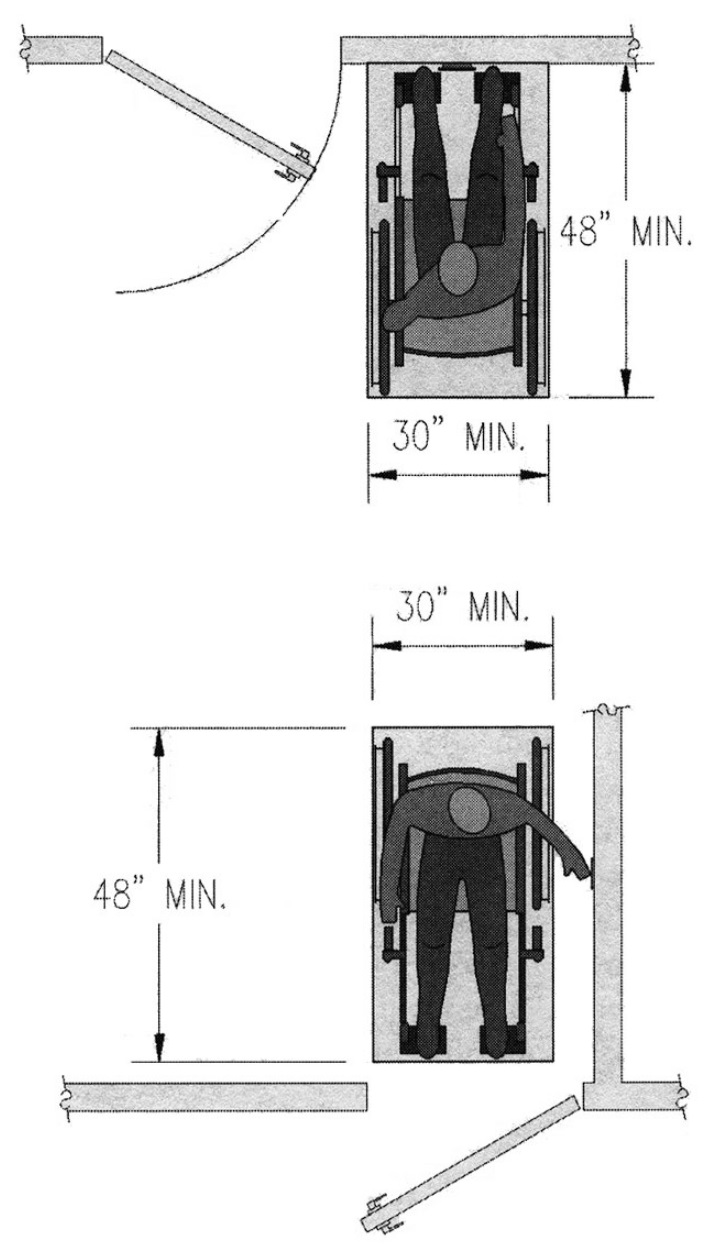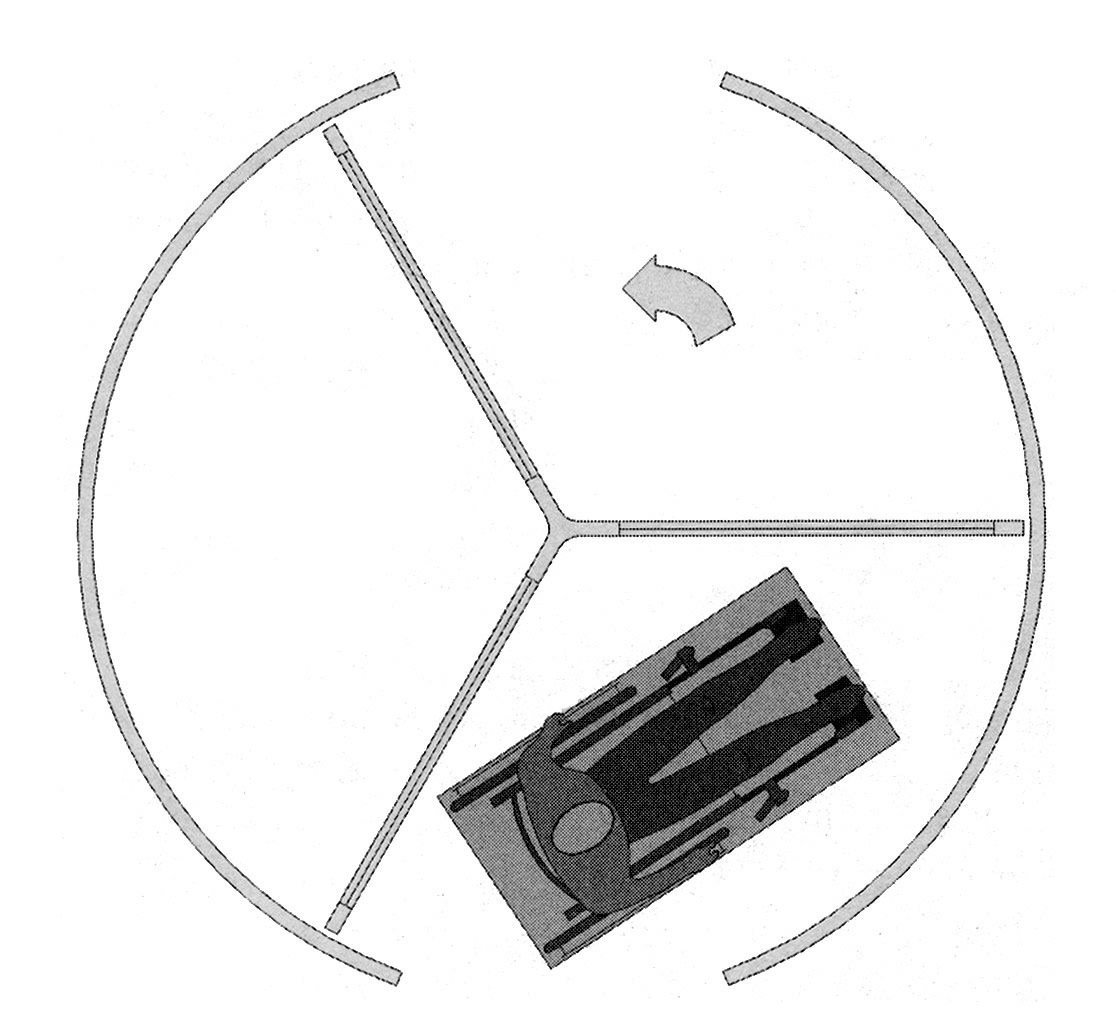Automatic Doors and Power Assisted Doors [4.13.12]
Automated doors are classified by industry standards according to the level of force produced by the door opening. Fully automatic doors, which produce the most force, are usually activated through control mats or sensory devices and are often used in facilities with heavy traffic such as airport terminals and grocery stores where people may be traveling with luggage or shopping carts. Low-powered doors are typically used at entries with lower levels of traffic to provide an alternative to manual doors, including revolving doors, in the same location. Most operate slowly, allow manual opening, and are often activated by a push button or plate. Devices that can be reactivated before the closing cycle is completed are recommended where traffic may be high. Power-assisted doors facilitate door opening by reducing the resistance force of closers. Some power-assists are activated by opening the door manually (and must meet ADAAG requirements for maneuvering clearance in 4.13.6 and opening force in 4.13.11) while others may be activated by a switch.
Controls
Push buttons or plates and switches are subject to relevant requirements for controls and operating mechanisms, including the maximum 5 Ib operating force. Recommendations: Buttons and plates should be raised or flush and at least ¾ inch in diameter (as specified for elevator control panels). Consider push plates at least 3 inches in the least dimension since they do not require fine motor coordination or visual acuity to operate. Clear floor space at controls should be located outside the door swing.

Closers
Automated door closing is addressed by the ANSI/BHMA standards. In addition, ADAAG requires that low-energy doors not open to back check faster than 3 seconds and require no more than 15 Ib, which is consistent with ANSI/BHMA A156.19.
Automated Revolving Doors.
Automated Revolving Doors
Automated revolving doors, if large enough, may be usable by many people who use wheelchairs although ADAAG requires that a revolving door not be the only means of passage at an accessible entrance [4.13.2]. An alternate door in full compliance with 4.13 is considered necessary since some people with disabilities may be uncertain of their usability or may not move quickly enough to use them. (Life safety codes also usually require a secondary swing door). While manufacturers have developed safety criteria, the industry safety code for automated doors referenced by ADAAG does not currently address revolving doors, and certain questions remain, such as the appropriate maximum speed.

Research sponsored by the Board ("Automated Doors" by Adaptive Environments Laboratory (1993)) indicates that automated revolving doors, in order to be wheelchair accessible, must have a diameter of at least 10 to 12 feet depending on the number of compartments so that each compartment provides clear floor space at least 30 by 48 inches. Other recommendations from this study include:
-
a minimum 32 inch clearance for each leaf when hinged out for emergency use
-
safety systems such as motion detectors within compartments and at the door opening that stop door movement without contact
-
a slow mode (2 RPM) that can be activated automatically or by user activation (manufacturers have recommended a maximum speed of 4 RPM maximum for general use)
-
signage indicating slow down features and other user controls

User Comments/Questions
Add Comment/Question